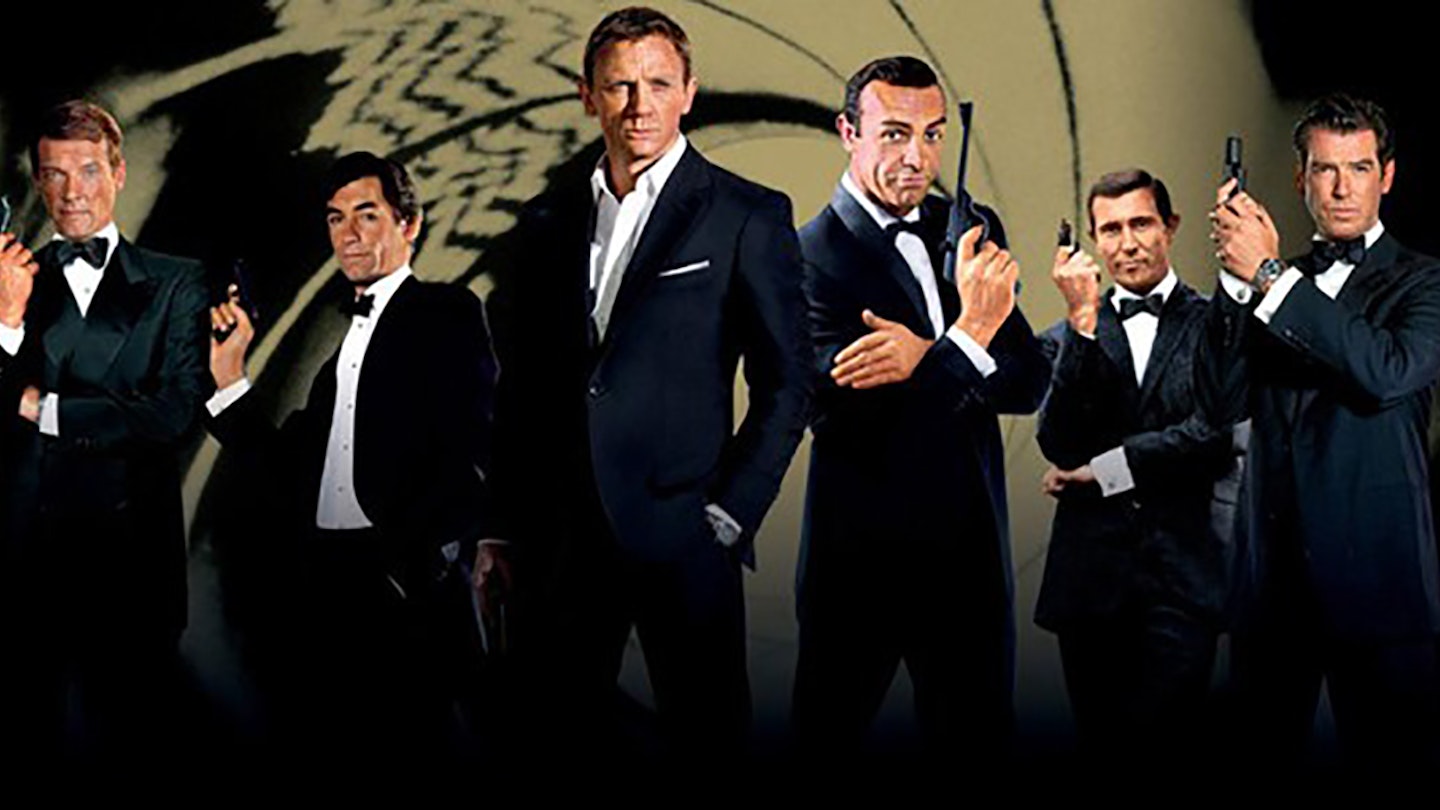It’s a time of celebration in the world of Ian Fleming’s James Bond, a film franchise that has so far spanned over half a century, twenty-four entries and six actors who have brought the character to life. This year marks significant anniversaries of five of those films, so Empire takes a look back at each of them.
You Only Live Twice (1967 — 50 Years)
By his fifth turn as James Bond, Sean Connery had had enough of Bondage. Part of it due to a growing fear of typecasting, part of it from his belief that he had not benefited financially in the way that he deserved considering the global success of the 007 films. And no small portion of his frustration stemmed from the way that the films had been evolving.
When he made his debut as 007 in 1962’s Dr. No, the film was a low-budget action thriller about a more or less disgruntled scientist who wanted revenge against those who dismissed him by interfering with the American space program. A year later, From Russia With Love had seen the approach changed to more of a Hitchcockian taut thriller regarding a decoding device, which also happened to feature one of the best edited fight sequences ever presented up until that point (Bond versus Robert Shaw’s Red Grant on the Orient Express). Then, a year after that, there was what many still consider to be the best of the Bonds, Goldfinger. In it, Bond went up against Gert Frobe’s Auric Goldfinger and his mute henchman Odd Job (Harold Sakata) in an effort to stop the former from radiating the gold in Fort Knox, thus increasing the value of his own considerable supply. The film also introduced audiences to the Aston Martin DB5 and blessed the world with a character named Pussy Galore (Honor Blackman).
And then there was 1965’s (how did they crank these out year after year like that?) Thunderball, which elevated the formula as Bond attempts to recover a pair of stolen nuclear bombs that SPECTRE planned on detonating if its demands weren’t met. By this time, the world was consumed with Bondmania and it seemed like the series could go on forever (doing a pretty damn good job of hanging in there all these decades).
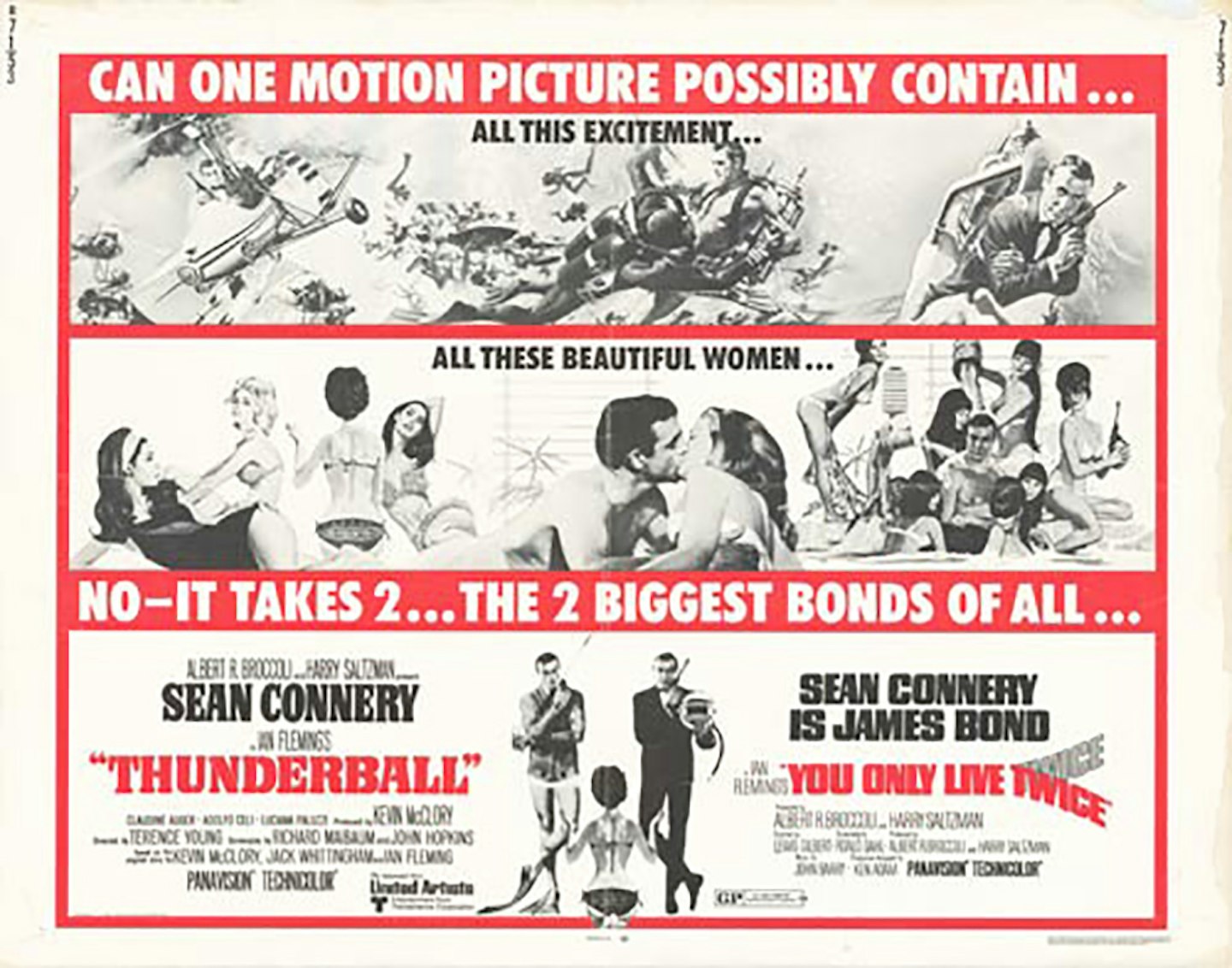
By the time Connery had gotten to You Only Live Twice, he believed that the Bond character was as much along for the ride as the audience was, carried away by ever-increasing gadgets, action that completely defied logic and a desire on the part of producers Albert R. Broccoli and Harry Saltzman to “go bigger” in all areas with each subsequent film, even if the cost was the Bond character itself.
Tom Mankiewicz, who wrote Diamonds Are Forever, Live And Let Die and The Man With The Golden Gun, commented in an interview with Bondage magazine, “What turned the Bond pictures around was that car in Goldfinger. I think the minute Sean pressed the button on the ejector seat, and the audience roared, the series turned around. The audience saw outlandish things they had never seen before, and the natural response of anybody — a writer, a filmmaker — is to give them more; more of what they want. And there’s a constant pressure as the films gross a great deal of money to make each one bigger and ‘more’ than the last.”
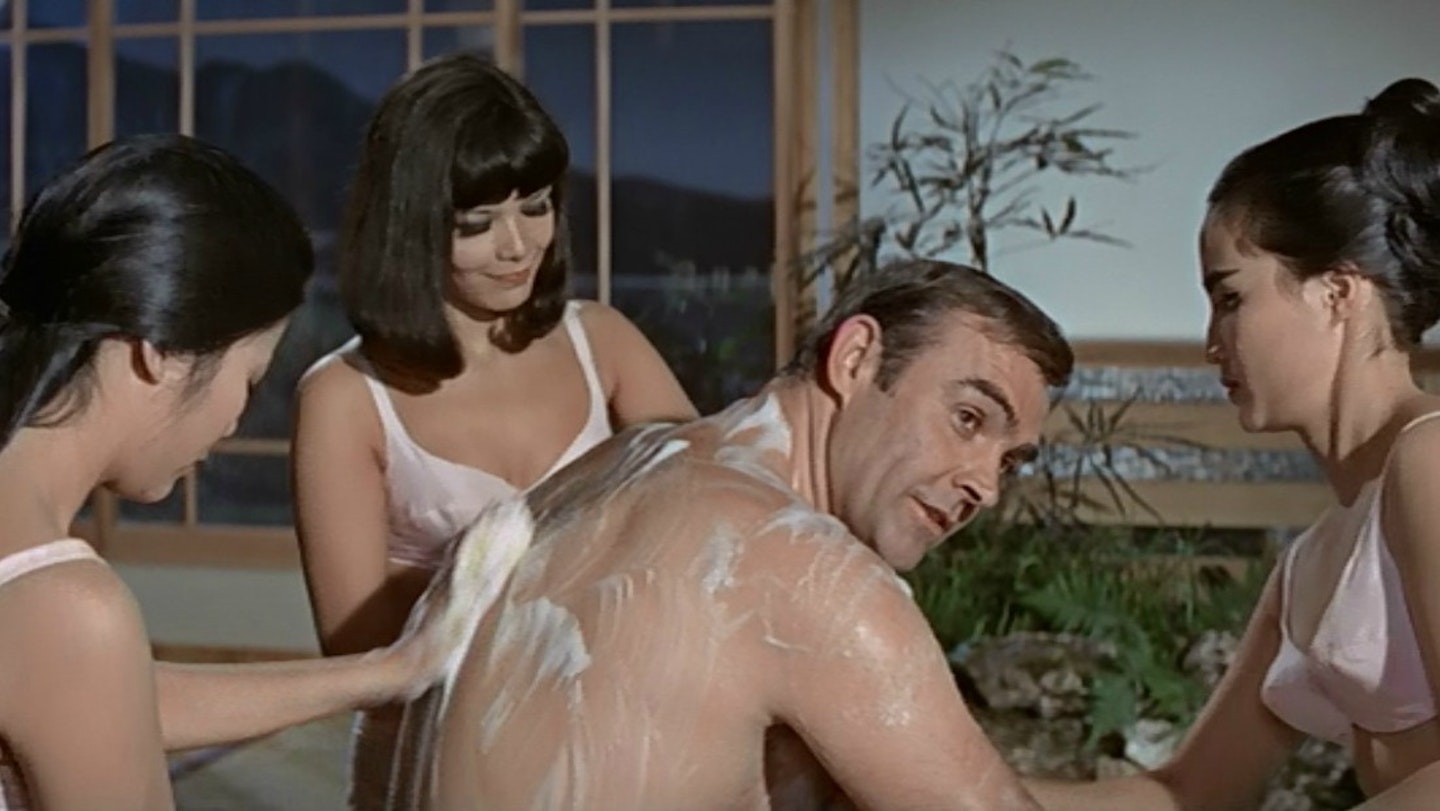
With You Only Live Twice, that “more” was represented by things like bad guys’ car being scooped up off of a bridge by a helicopter with a magnet attached to it; James Bond battling his enemies in a tiny helicopter (“Little Nellie”), arch enemy Ernst Stavro Blofeld situating himself in a hollowed out volcano in Japan — surrounded by seemingly thousands of jumpsuit-clad agents of SPECTRE — from which he could orchestrate World War III by stealing space capsules from Russia and America; and James Bond “turning” Japanese for some reason that still defies logic half a century later.
But all of that being said, in many ways You Only Live Twice (and, to be fair, Thunderball) is an iconic representation of the collective memory of what Bond films represented to that first generation 007 fan. Mike Myers certainly conveyed that with his Austin Powers films, which, while serving as a take-off of the ‘60s spy genre in general, certainly takes much of its inspiration from YOLT (Bond fans love their acronyms).
The Spy Who Loved Me (1977 — 40 Years)
There were changes aplenty in the world of 007 in the decade between You Only Live Twice and Spy (it’s always cool to reduce a film’s title to one word — Empire, Jedi, Raiders...but we digress). Connery left after YOLT to be replaced by George Lazenby in the decidedly character-oriented (but fiscally disappointing without Connery) On Her Majesty’s Secret Service (1969), who was replaced by the returning Connery for 1971’s fairly incomprehensible Diamonds Are Forever (his last Bond film before he decided to never say never again a little more than a decade later) who was replaced in turn by Roger Moore.
Known primarily at the time for his role as Simon Templar on The Saint, Moore debuted as 007 in 1973’s Live And Let Die, which turned into a strange hybrid of Bond’s world and the booming blaxploitation craze at the American box office, while giving the world the title song from Paul McCartney. He followed in 1974 with The Man With The Golden Gun, a Bond film many actually consider painful to watch in variety of ways, despite Christopher Lee’s portrayal of the title character. In a sense, the grandeur of You Only Live Twice had been done away with over the subsequent four films, but that all changed with 1977’s Spy.
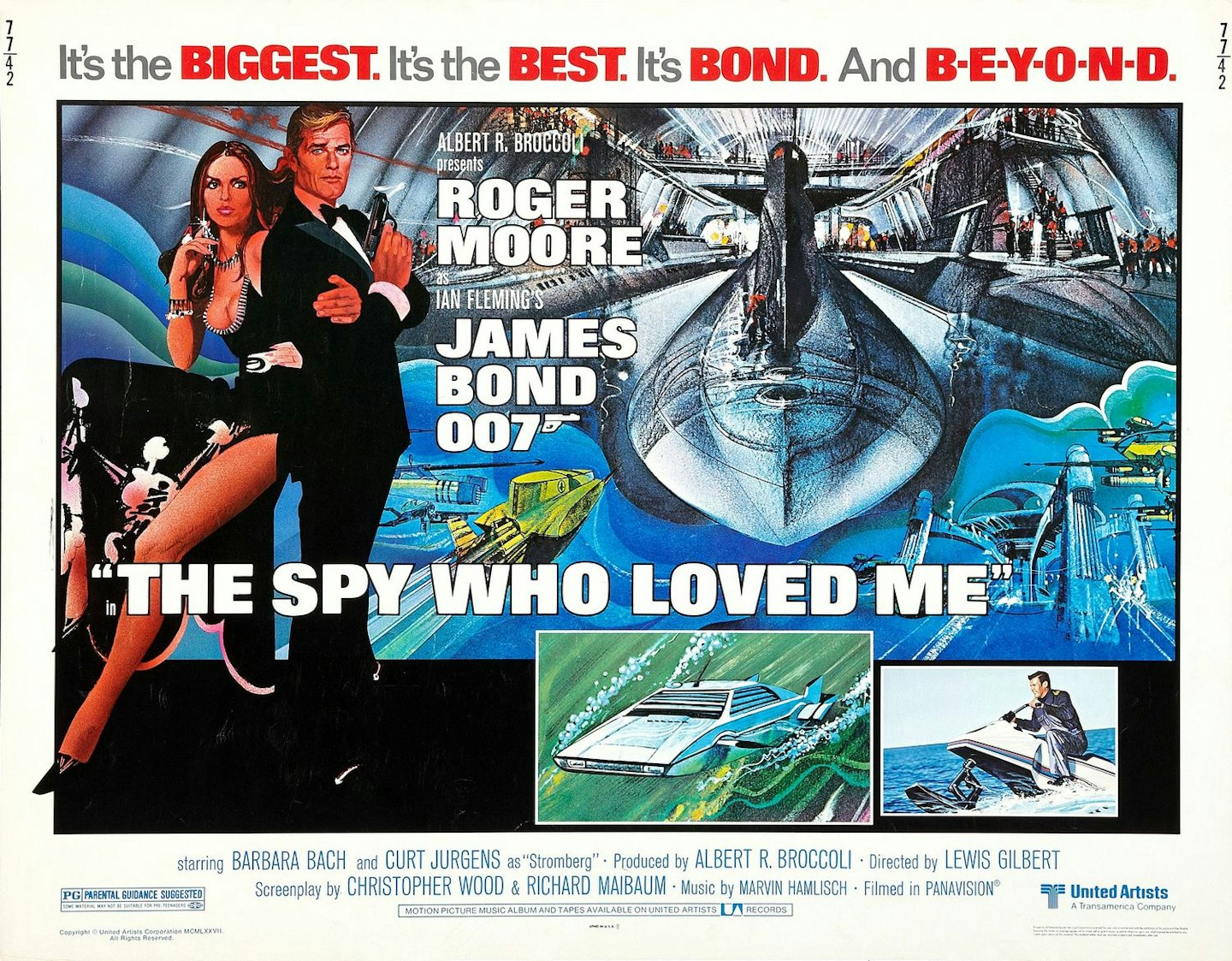
For Moore, actor and character finally melded in his third outing and in many ways this was a throwback to the larger-than-life days of the Sixties films. Broccoli, producing on his own and without Saltzman, wanted to bring Bond back to the glory time of villains threatening the world with global destruction and larger-than-life action sequences. In fact, in many ways Spy actually serves as a remake (albeit a superior take ) of You Only Live Twice, with Blofeld replaced by Kurt Jurgens’ Stromberg, stolen space capsules altered to polaris nuclear submarines and that film’s Lewis Gilbert returning to direct. Right from the opening sequence we know this film is going to be different as Bond, while eluding the bad guys, skis off the edge of a mountain and seemingly plummets towards certain death, until a hidden (and unsuspected) parachute opens, allowing him to float to safety and triggering applause from audiences in cinemas around the world.
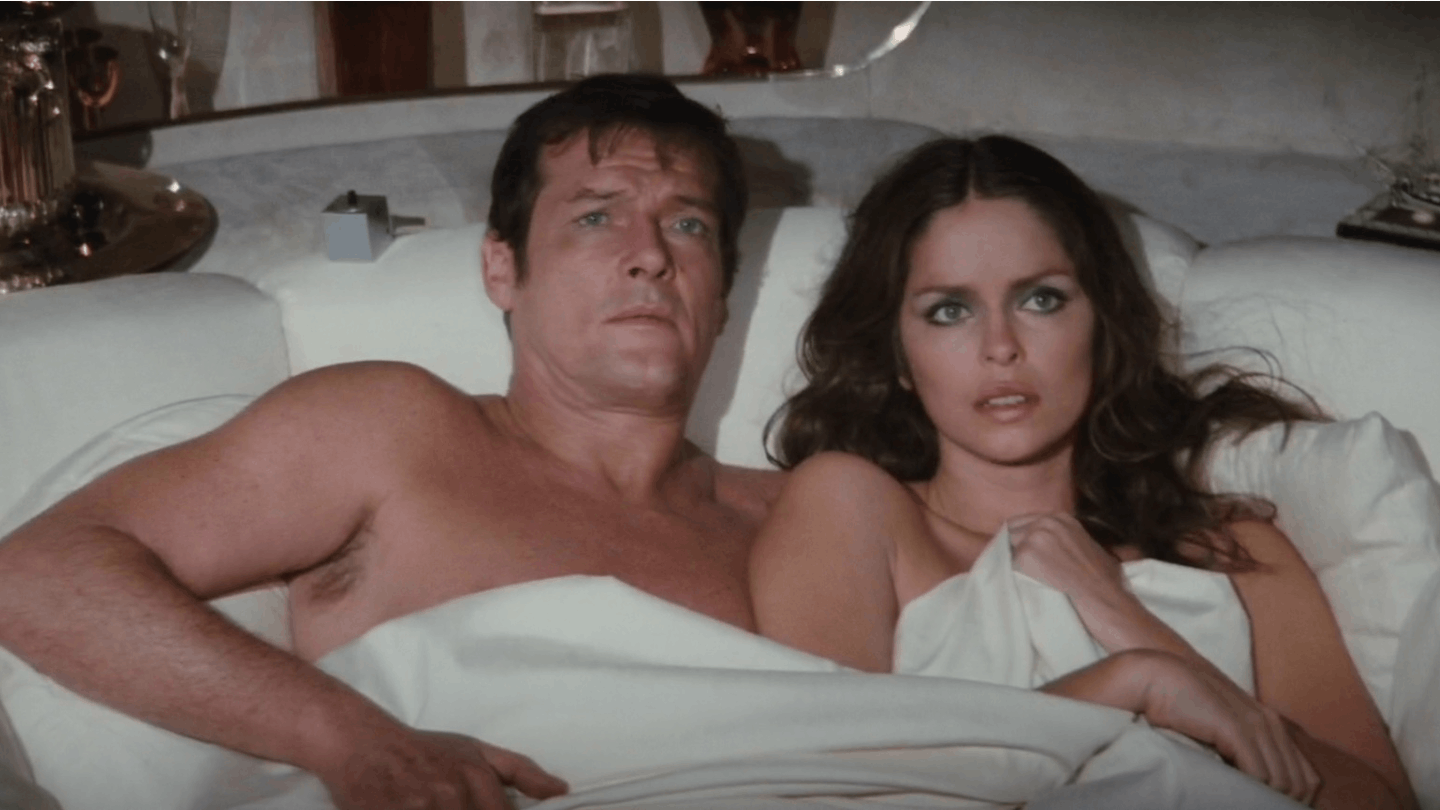
Beyond that, there were great car chases (including Bond driving/piloting the underwater traveling Lotus Esprit), Richard Kiel’s Jaws (he of the titanium teeth and seemingly indestructible), Caroline Munro as Stromberg’s beautiful but deadly henchwoman, Naomi; Stromberg’s hollowed out ocean tanker that is large enough to swallow up multiple submarines and house thousands of uniformly jumpsuited lackies; and the first woman in the series to equal Bond in all areas, Barbara Bach’s Major Anya Amasova/Russian Agent XXX.
By this point, Moore had mastered his unflappable approach to Bond, but there is a great moment between Bond and Anya where she references his late wife (killed at the climactic moment of OHMSS) and his response is understated, yet powerful. All around, Spy was a tough act to follow.
The Living Daylights (1987 — 30 Years)
Flash forward another ten years. Moore followed Spy with 1979’s Moonraker, yet another variation of YOLT, which brought Bond into space ostensibly to stop Michael Lonsdale’s Hugo Drax from destroying the world’s population to make way for his master race, but in reality to tap into the success of Star Wars, released two years earlier. Things grew considerably more grounded again in 1981’s For Your Eyes Only, the closest a Moore Bond film got to, say, FRWL, as 007 competes with the Russians for the A.T.A.C., a device that can control the Royal Navy’s Polaris submarines. Octopussy, released in 1983, was more of a hybrid between grounded and fanciful Bond, Moore apparently having a good time as 007 must stop a renegade Russian soldier and Afghan prince (the latter portrayed by Louis Jordan) from creating a nuclear “accident” that would ultimately defuse Western European defense against loyalists of said Russian. For Moore, it all came to an end with 1985’s A View To A Kill, which in many ways proved to be a Bond too far for the actor as his age was showing. The film did, however, have the positives of Christopher Walken as villain Max Zorin and Duran Duran’s amazing title song, but then there was Tanya Roberts as Stacey Sutton. Ouch.
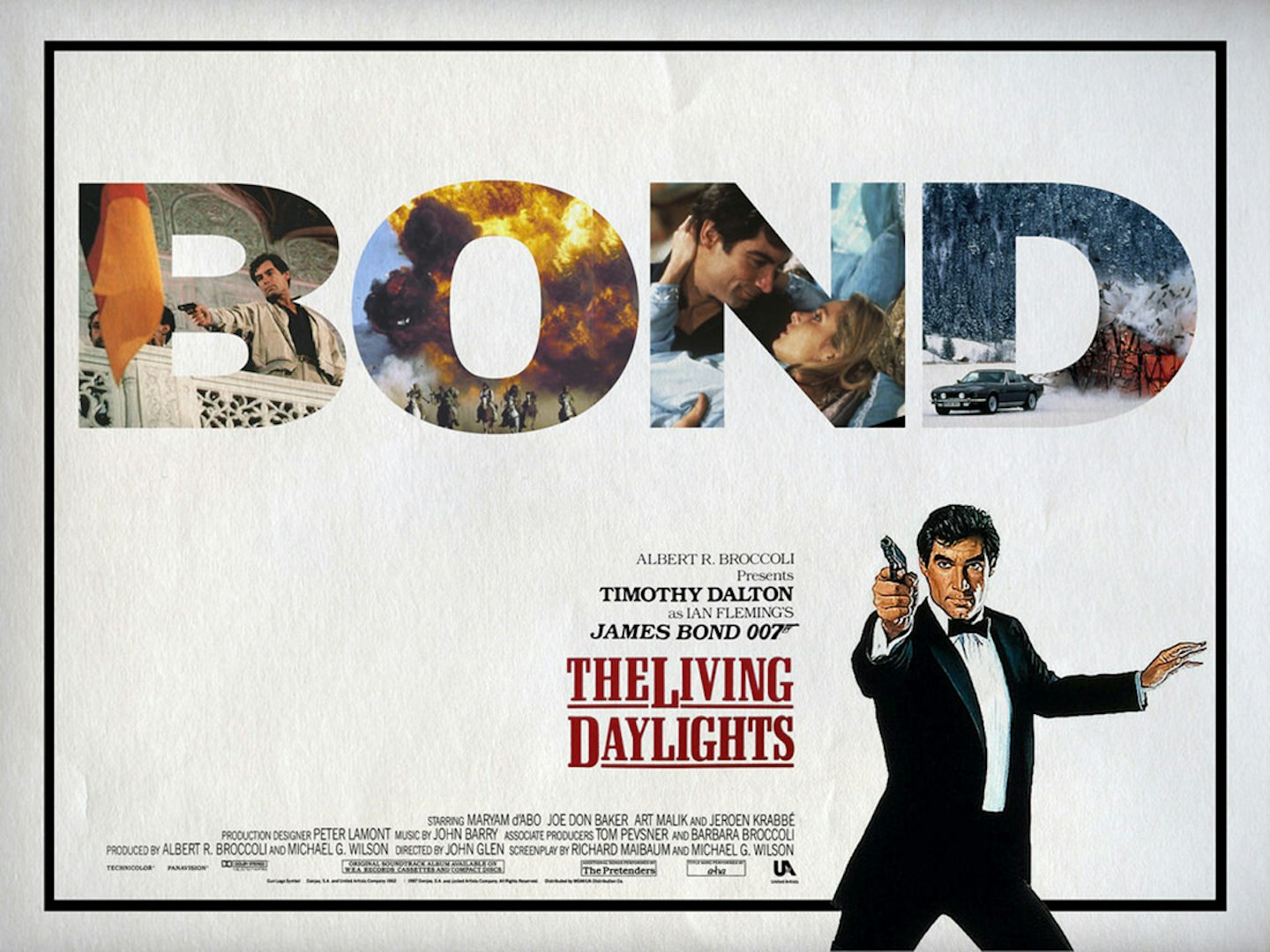
By 1987, it was time for a new Bond (think Doctor Who without actual regeneration) and a new, grittier approach. Enter Timothy Dalton, who was determined to get his characterization of Bond as close to Fleming as he possibly could. Everything about this, the fifteenth entry in the series, felt reinvigorated, from the performances to the direction of John Glen (his fourth Bond film) and the John Barry score. The plot involves an (apparently) defecting KGB agent secretly working with an American arms dealer on a massive opium deal that ultimately takes the action to Afghanistan. There, Bond, working with Afghan rebels, must defuse the situation. Dalton deserves some kudos for offering up a performance that was so radically different from Moore’s, summed up nicely in an early scene when he ignores instructions and wounds a suspect rather than assassinating her, commenting, “Stuff my orders. I only kill professionals. That girl didn’t know one end of her rifle from the other. Go ahead. Tell M what you want. If he fires me, I’ll thank him for it.”
If there was a criticism of Dalton here, and it would become even more pronounced in the next film in the series, 1989’s Licence To Kill, it’s that he lacked the natural humor that (particularly) Connery had brought to the part. Dalton’s Bond was mostly business, and even his throwaway lines brought such import to them that much of the audience couldn’t help but hope that he would lighten up a bit. It could be argued that that element wasn’t a part of his wheelhouse, but watching him bring both charm and humor to the role of villain Neville Sinclair in The Rocketeer shows that wasn’t the case. Had he brought some of that to Bond, his tenure likely would have lasted more than two films.
Tomorrow Never Dies (1997 — 20 Years)
Six of the ten years between TLD and Tomorrow Never Dies were spent in limbo as far as Bond was concerned and, for the fans, seemed interminable. A combination of low box office for Licence To Kill and legal issues regarding the global TV rights to the film catalog kept 007 out of production. In the interim (get set for a long-winded description), Dalton departed and was replaced in 1995’s GoldenEye by Pierce Brosnan, who had actually been hired to play the character in The Living Daylights prior to Dalton, but was forced to give that up when NBC, which had canceled his TV series Remington Steele, but then hoping to cash in on Bond publicity, renewed the series at literally the last moment, essentially screwing the actor without the courtesy of vaseline. He lost the part, and NBC ultimately recanceled the show.
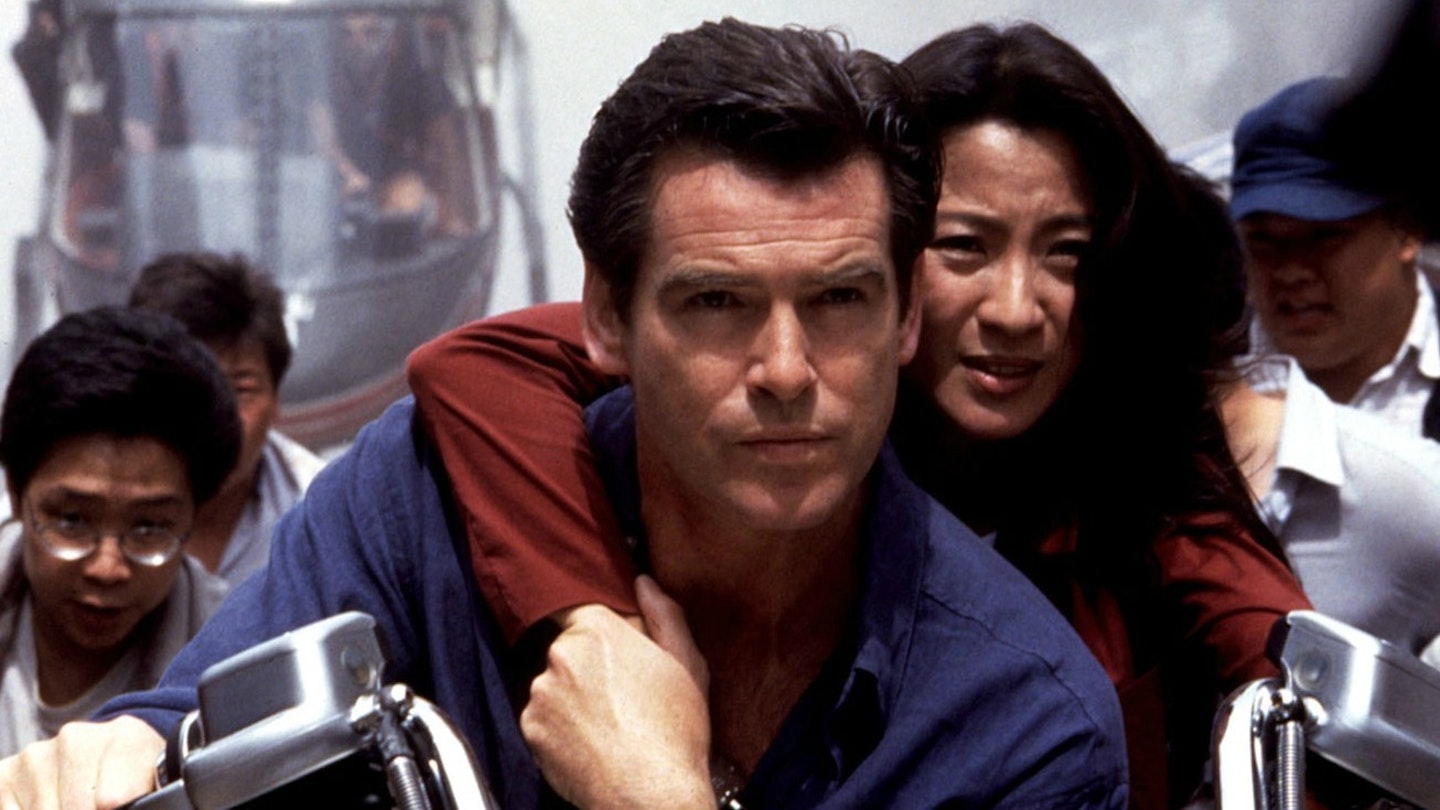
What Brosnan immediately proved on his arrival as Bond is that if Sean Connery and Roger Moore had a love child, he would be it, capturing the best elements of both. He was capable of ruthlessness and a light delivery of the character’s quips. While GoldenEye is considered by most to be his best Bond film, its followup, Tomorrow Never Dies, appears to be an underrated entry in the series. The action is spectacular, and there’s some character heat between Bond and Teri Hatcher’s Paris Carver (wife of media magnate and main villain, Elliot Carver, played by Jonathan Pryce). The plot — Carver’s efforts to manipulate the news by creating it in the hope of triggering a war between Britain and China all in the name of ratings and sales — seems almost prescient given how all-encompassing the Internet and vying for clicks has become.
Other highlights include Michelle Yeoh as agent Wai Lin, Vincent Schiavelli’s chilling yet humorous turn as torturer Dr. Kaufman, the score by David Arnold that captures the essence of John Barry yet makes it his own, a killer end titles song by KD Lang (“Surrender”, see the recut opening titles to the film utilizing it above); and director Roger Spottiswoode, who, despite numerous reported production problems, does a sterling job in keeping things moving. Unfortunately for Brosnan, things would go downhill from here.
Skyfall (2012 — 5 Years)
Time hopping fifteen years, more changes to the series. While financially successful, Brosnan’s The World Is Not Enough (1999) and Die Another Day (2002) demonstrated a growing lack of focus, and a return to downright inanity, particularly true in the case of the latter with its invisible cars, and villain in some sort of electrified super suit that Bond himself doesn’t even comment on (and Bond comments on everything). So odd. But with producers Michael G. Wilson and Barbara Broccoli (children of Albert, who had passed away) recognizing that they simply didn’t know what creative direction to take, the decision was made to go back to the beginning, to see 007 at the start of his career. The result was Casino Royale (2006) and the introduction of Daniel Craig in the role.
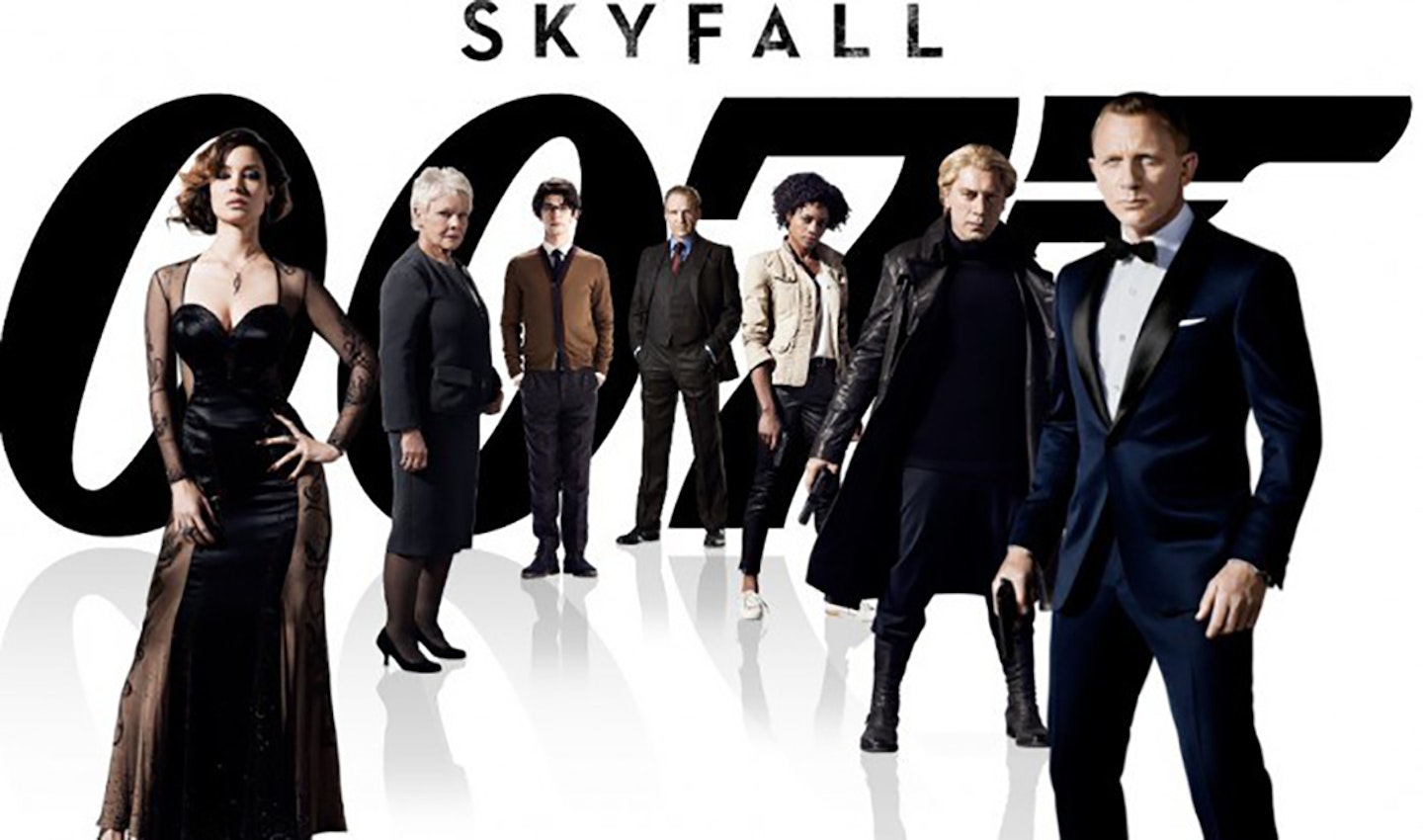
Not since Dr. No had an actor stepped into the part and so clearly owned it from frame one, Craig being the one actor to come this close to Connery. Quantum of Solace (2008) followed, carried by the strength of Craig and the direction of Marc Forster, but marred by a subpar script that fell victim to a Writers Guild strike and the producers’ decision to go into production anyway.
Everyone more than made up for it with Skyfall, the fiftieth anniversary Bond film. Directed by Sam Mendes from a John Logan screenplay, it scored with critics and enjoyed a global box office success of over one billion American dollars. All of which proved that a Bond film as concerned with character as it was with action could work and connect despite a half century of adventures and twenty-two previous entries.
In Skyfall, the past comes home to roost in a major way. For M (Judi Dench making her seventh and final appearance in the role — if you don’t count a video message to Bond that was featured in 2015’s Spectre) it’s in the persona of agent gone renegade Silva (the chilling Javier Bardem), who feels he’s doing his part by giving Bond a view of what his own future could look like: used, abused and abandoned by the world he feels they were manipulated into joining. And for Bond, it's in his recognition of his place in the world, the question of whether or not he’s past his prime (c’mon — it’s only been three movies), and an allegorical return to his childhood by going back to the home he grew up in (Skyfall). There a final battle is staged between he and Silva; a battle that plays like Home Alone on steroids as 007, M and house caretaker — who, incidentally, doesn’t seem very good at his job — Kincade (Albert Finney) rigging the place with booby traps to be used against Silva and his henchmen.
Additional bonuses: Adele’s incredible title song (one of the series’ best), cast additions of Naomie Harris as Eve Moneypenny, Ben Whishaw as Q, and Ralph Fiennes as Gareth Mallory (who becomes the new M in Spectre).
Happy Anniversary, Mr. Bond. Hope to see you again, soon.
• James Bond 25: Sam Mendes on Daniel Craig's Post Spectre Future
